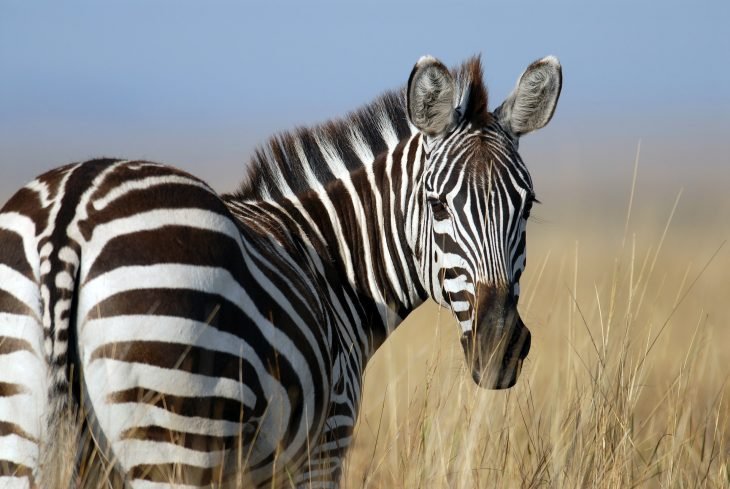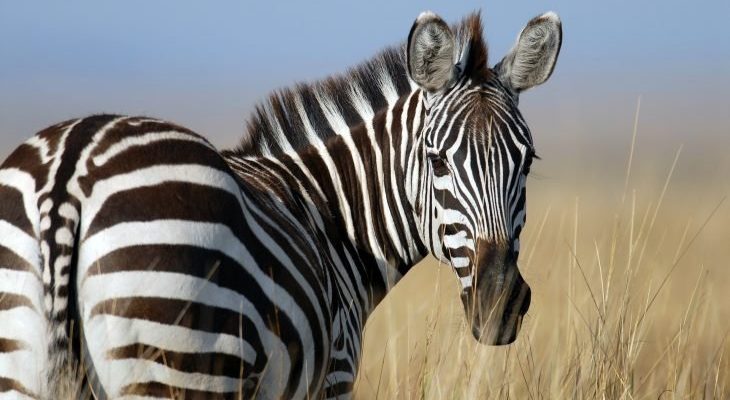
These animals, native to Africa, have some remarkable traits that set them apart from other members of the horse family. They live in groups called harems and have a rich social structure. But let’s not get ahead of ourselves; there’s plenty to uncover. Here’s a deep dive into some of the most intriguing facts about zebras that might just surprise you.
1. Unique Stripes for Every Zebra
Ever seen a zebra and thought, “Wow, they all look the same?” Well, here’s the thing: no two zebras have the same stripes! Just like human fingerprints, a zebra’s stripes are unique to each individual. Researchers have discovered that these patterns serve as a kind of identification for zebras. It helps them recognize each other in a herd, reducing confusion and allowing for social bonding.
You might be wondering why evolution favored such a striking appearance. Some scientists believe that the stripes actually help deter biting flies. These pests are attracted to solid colors but get confused by the contrasting stripes, making zebras less likely targets. So, those fashionable stripes aren’t just for show; they’re a practical survival tool!
2. Social Animals with Complex Relationships
Zebras are social creatures that thrive on interaction. They live in groups called **harems**, typically consisting of one stallion and several mares, along with their offspring. Within these groups, zebras develop strong social bonds. They communicate through various vocalizations and body language, ensuring that everyone knows their place in the hierarchy.
You might have seen zebras grooming each other, and this isn’t just a beauty routine. Mutual grooming helps strengthen friendships and build trust within the group. Imagine giving your friend a good back scratch; it’s a way to say, “I’ve got your back!”
3. Zebras Have a Unique Feeding Style
When it comes to food, zebras both graze and browse, meaning they eat grass and other vegetation like leaves and shrubs. Their digestive systems are specially adapted to process tough plant material, thanks to their unique, multi-chambered stomachs. This allows them to extract as many nutrients as possible.
Zebras spend a big portion of their day—about 16 hours—eating to meet their dietary needs. That’s a lot of munching! They prefer grasses that are low to the ground, often seen grazing in open savannahs. This feeding style keeps them close to the ground and, unfortunately, makes them easier targets for predators like lions and hyenas.
4. Zebras Are Excellent Climbers
You might picture zebras running across flat plains, but they’re also surprisingly versatile when it comes to navigating their environment. Zebras can climb steep hills and navigate rocky terrains with ease. Their strong legs and agility give them the ability to escape predators and find food in less accessible areas.
So, if you ever thought zebras were just flat-land dwellers, think again! Their climbing ability helps them survive in the African landscape, and they often use this skill to reach water sources during droughts.
5. A Zebra’s Vocalizations
Zebras have a language all their own, and it’s quite the chatter! They communicate through a range of sounds, including barks, whinnies, and brays. Each vocalization has a specific meaning, helping them express everything from danger to excitement. For instance, a mother may call out to her foal to guide it back to safety.
Imagine a room full of friends talking; you can pick up on the mood just by listening. Zebras do the same with their unique sounds, allowing them to stay connected to their herd even from a distance.
6. The Importance of Stripes in Social Dynamics
Those bold stripes serve another purpose beyond identification—they play a role in social dynamics! Researchers found that zebras use their stripes to signify their mood. For instance, when a zebra is agitated, its stripes may appear more vibrant.
Additionally, the stripes can help calm other zebras. When a herd feels threatened, they often stand close together, creating a mesmerizing visual effect that can confuse predators. Picture a moving magic trick! This unique feature allows zebras to blend into a mass of stripes and escape notice.
7. Zebras and Their Migration Patterns
Zebras are known to undertake incredible migrations in search of food and water. They often travel in large groups, sometimes alongside wildebeests and other animals, to stay safer from predators. This journey can span hundreds of miles, showcasing their resilience and adaptability.
Migration isn’t just about survival; it’s also a great way to maintain genetic diversity. By mixing with other zebra groups during these migrations, they can strengthen the gene pool and improve the health of future generations. It’s like a big family reunion on the move!
8. Zebras in Danger: Conservation Efforts
Despite their resilience, zebras face numerous threats, including habitat loss and poaching. All three species of zebras (plains, Grevy’s, and mountain) have seen population declines. Conservation programs are essential to protect these iconic animals and their habitats.
Wildlife reserves and protected areas are critical in ensuring that zebras can thrive. Organizations work hard to educate communities about the importance of zebras and how to coexist with them. After all, preserving their home means saving a piece of our natural heritage.
9. Zebras and Their Foals
Did you know zebra foals are born with brown stripes instead of black and white? It’s true! At birth, a foal’s stripes can be faint and gradually darken as they mature. This helps them stay hidden from predators during those vulnerable early days.
Zebras give birth to one foal at a time after a lengthy gestation of around 12 months. The strong maternal bond between a mare and her foal is heartwarming. The mother will keep a close watch on her young one, guiding it and teaching it essential survival skills.
10. Cultural Significance of Zebras
Finally, zebras hold a special place in various cultures. They’re often seen as symbols of balance and harmony due to their contrasting stripes. In some African folklore, zebras represent the duality of life, embodying both light and dark.
You’ll find zebras depicted in art, fashion, and even literature, serving as a reminder of the beauty of nature and its rich diversity. They inspire people worldwide, connecting us to the wild and reminding us of the importance of conservation.
In conclusion, zebras are more than just cute animals with striped coats; they’re fascinating creatures with complex behaviors and roles in the ecosystem. From their unique stripes to their social structures, every aspect of their lives is worth celebrating. Whether you’re an animal lover or just someone curious about the animal kingdom, zebras are certainly a topic to dive into. So next time you see a zebra, remember there’s a whole world of intrigue behind those stripes!

